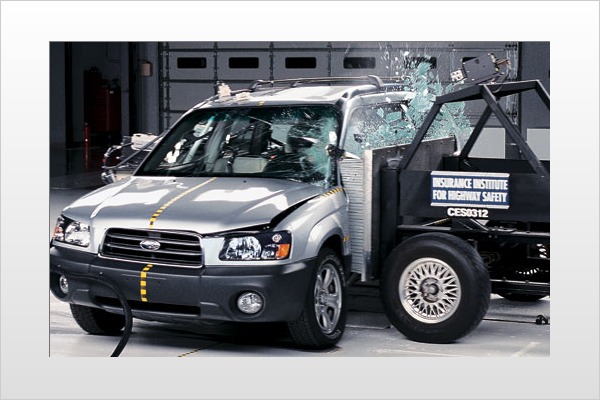
Those with long memories will likely recall times in the past when the government had to drag automakers kicking and screaming into the court of public opinion — and sometimes into real court — before the automakers would agree to expensive new measures to make your vehicles safer. But times have changed, and with safety now a top priority for consumers, automakers are actively looking for ways to improve their cars. Behind the scenes, however, the federal government is still playing a direct role in dictating safety requirements, and the latest mandate involves side-impact protection.
A New Safety Standard
A standard enacted late in 2007 by the National Highway Traffic Safety Administration (NHTSA) mandates that all automakers must phase in additional side-impact protection as a standard feature for their cars, trucks and SUVs. The requirement goes into effect beginning September 1, 2009, and every automaker must comply within four years.
Currently, the federal government uses a movable deforming barrier to simulate being struck in the side by another vehicle. To this, the new mandate adds a tough new test that simulates a vehicle crashing sideways into a pole.
Because it's a "performance standard," automakers can meet it however they wish, but both NHTSA and the Insurance Institute for Highway Safety (IIHS) expect that torso-protecting side-impact airbags as well as head-protecting side curtain airbags will almost certainly be necessary for vehicles to meet the new standard. Additionally, carmakers are required to buttress the sides of their vehicles through stronger roof rails, rocker panels and B-pillars that absorb more crash energy.
Side Impact Has Become a New Priority
According to the IIHS, side-impact crashes killed about 8,225 Americans in 2007, the latest year for which the data was available. Certainly, head-protecting side airbags can help. The IIHS says they reduce fatality risks by 37-52 percent, depending on the vehicle.
But is this a case of regulators nearly having to catch up to where the automotive market already has traveled? The vast majority of cars and SUVs offer some sort of side-airbag protection, whether standard or optional. In fact, automakers actually made a voluntary agreement in 2003 to make these airbags available in at least half their vehicles by September 1, 2007. Regardless, automakers aren't too far off from meeting the federal requirements. For the 2009 model year, approximately three quarters of all vehicles have standard side airbags.
"We've gone all the way from coercion via regulation to carmakers competing to see who can get these safety devices into cars," said Ann Fleming, a senior vice president of the IIHS.
Fatalities in head-on collisions have declined dramatically since the government mandated front airbags as standard equipment in 1991. That means side impacts have increased in relative importance as a vulnerability for drivers and passengers.
The percentage of fatalities attributed to side-impact crashes rose to 49 percent in 2004-'05 from just 31 percent in 1980-'81. A major contributor is the growing sales of SUVs and pickups, which have exacerbated vehicle height mismatches and increased occupant risks. But as a testament to the improving technology, the fatality rate has dropped to 28 percent for 2007.
How Much Is It Going To Cost?
Some automakers, such as Volvo, began installing side airbags into their vehicles in the late 1990s. But when NHTSA first proposed a new side-impact crash standard in 2004, the industry filed a number of complaints. One of them was that the government had underestimated the cost of the new rule to automakers at only $208 per vehicle.
Today, side airbags add about $33 to the cost of producing a vehicle. Clearly, the rule will produce extra cost pressures on automakers. But the fact that every company will have to install them — as well as the mix of other factors that affect pricing — means that newly standard side airbags by themselves aren't likely to push retail prices up much. At retail, side airbags range from $250 to $500. But an increasing number of automakers bundle side airbags with other features in packages that can substantially raise the price.
Cooperation Evolves Around Side Airbags
The next challenge for regulators and the IIHS, is to press the industry to make it more difficult for a rambunctious child or leaning occupant to cause inadvertent inflation of the side airbags.
"For consumers, the fact that the two sides got together so agreeably means that this safety advancement, that we know is so beneficial, got into cars much faster than the regulatory process could have forced it," said Fleming.
So side airbags will follow the pattern of front airbags and other major pieces of safety technology — including antilock braking systems and electronic stability control — which began as a four-figure option and now are simply part and parcel of the standard price of a vehicle.
Dale Buss is a Michigan-based journalist who has covered the auto industry for more than 20 years.